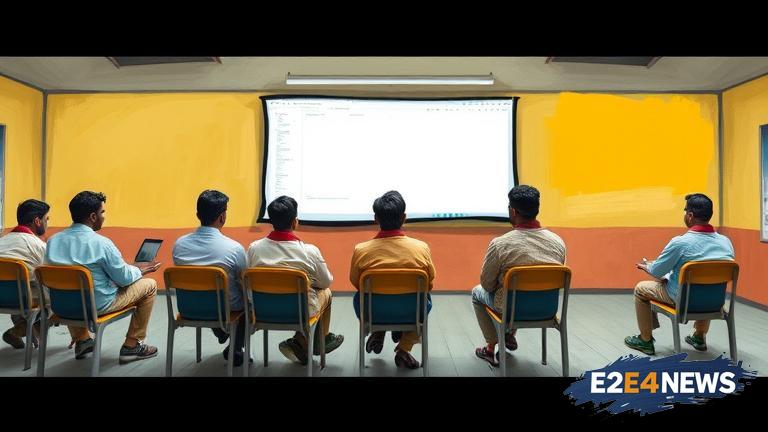The Kerala government has taken a significant step towards revolutionizing the traditional classroom seating arrangement. A panel has been formed to decide on a new seating arrangement that aims to eliminate the concept of backbenchers. This move is expected to promote inclusive and interactive learning environments, where every student has an equal opportunity to participate and engage with the teacher. The panel, comprising education experts and stakeholders, will study and recommend the best seating arrangement that fosters a sense of community and collaboration among students. The traditional seating arrangement, where students are seated in rows, has been criticized for creating a hierarchical structure, where students at the back are often marginalized. The new seating arrangement is expected to address this issue and create a more democratic and participatory learning environment. The Kerala government has been at the forefront of educational reforms, and this move is seen as a significant step towards creating a more student-centric and inclusive education system. The panel will consider various factors, including the size of the classroom, the number of students, and the type of furniture, to recommend a seating arrangement that is both functional and comfortable. The new seating arrangement is expected to be implemented in all government schools in Kerala, and will be monitored and evaluated to ensure its effectiveness. The move has been welcomed by education experts and stakeholders, who believe that it will have a positive impact on student learning outcomes and overall educational experience. The Kerala government has also announced plans to provide training to teachers on how to effectively use the new seating arrangement to promote interactive and inclusive learning. The training program will focus on developing the skills and competencies of teachers to create a more student-centric and participatory learning environment. The move is seen as a significant step towards creating a more modern and progressive education system in Kerala, and is expected to have a positive impact on the state’s educational landscape. The Kerala government has also announced plans to introduce new technologies and innovative teaching methods to enhance the learning experience of students. The introduction of new seating arrangements is seen as a key component of this strategy, and is expected to play a critical role in creating a more interactive and engaging learning environment. The move has been welcomed by parents and students, who believe that it will have a positive impact on their educational experience. The Kerala government has also announced plans to establish a monitoring and evaluation system to track the effectiveness of the new seating arrangement and make necessary adjustments. The system will collect data on student learning outcomes, teacher feedback, and parent satisfaction to assess the impact of the new seating arrangement. The data will be used to make informed decisions about future educational reforms and to ensure that the new seating arrangement is meeting its intended objectives. The move is seen as a significant step towards creating a more data-driven and evidence-based education system in Kerala, and is expected to have a positive impact on the state’s educational landscape. The Kerala government has also announced plans to share its experiences and best practices with other states and countries, and to learn from their experiences and expertise. The move is seen as a significant step towards creating a more collaborative and global education system, and is expected to have a positive impact on the educational landscape of the country. The introduction of new seating arrangements is seen as a key component of this strategy, and is expected to play a critical role in creating a more interactive and engaging learning environment. The Kerala government has also announced plans to provide additional resources and support to schools to implement the new seating arrangement, including funding for new furniture and equipment. The move is seen as a significant step towards creating a more equitable and inclusive education system, and is expected to have a positive impact on the educational experience of students from disadvantaged backgrounds.
